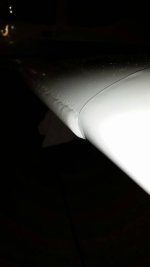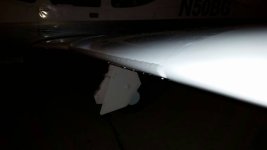Re: First I've seen ice in the wild . . .
Chris, your header does not say where you are from, what you fly, etc. (fix that!) Those of us in the Great Lakes States, have a problem in that from November through March, often in April, we will get a "forecast icing" at least 4 days out of 7, and often 5 or 6. And last year from late October through mid-December, I got ice on five flights where it was NOT forecast! It was a weird period. Never seen that before or after. (That included my Farmington MO and Operation Good Cheer flights.)
You fly around it long enough and you start to develop a sense of howheavy and serious it is. You look at the forecast, the maps, study the pireps, then if you decide you can go, you watch the temps, airspeed, pitot heat like a hawk. Also know exactly where the temp layers are because it is not unusual to be warmer above. Up here during winter, we often have these 1,000 to 2,000 foot layers that you can climb through or decend very quickly. You make calls to ATC or even other planes and find out who has gone through, where, and how long ago. So if you have a 1,000' layer with a couple reports of "light rime" you can safely get through that. Not a problem. If it was a 3,000 or 4,000 foot layer then no, I will not go there.
The thing that kills a lot of pilots is they do not notice they are in a warmer layer above, then have to descend through a layer into colder temps below. I have cancelled flights when I saw that situation, and have diverted several times when an inversion like that developed at a destination.
The rule is, yes, stay the hell out of ice, just like convective activity. But just like a line of cells, sometimes there are ways to get around it. Many, many times I have flown VFR underneath a 3,000 foot layer for 30 miles or even an hour in the winter, to get to where I can safely climb up.
It's about knowing what you can personally handle and cope with, and what your airplane can handle.
Well, it just occurred to me that I am talking the 114 here. I would be more conservative with a 112 for sure. So since I consider myself "quite conservative" ... I guess in a 112 I would be "extremely conservative."


